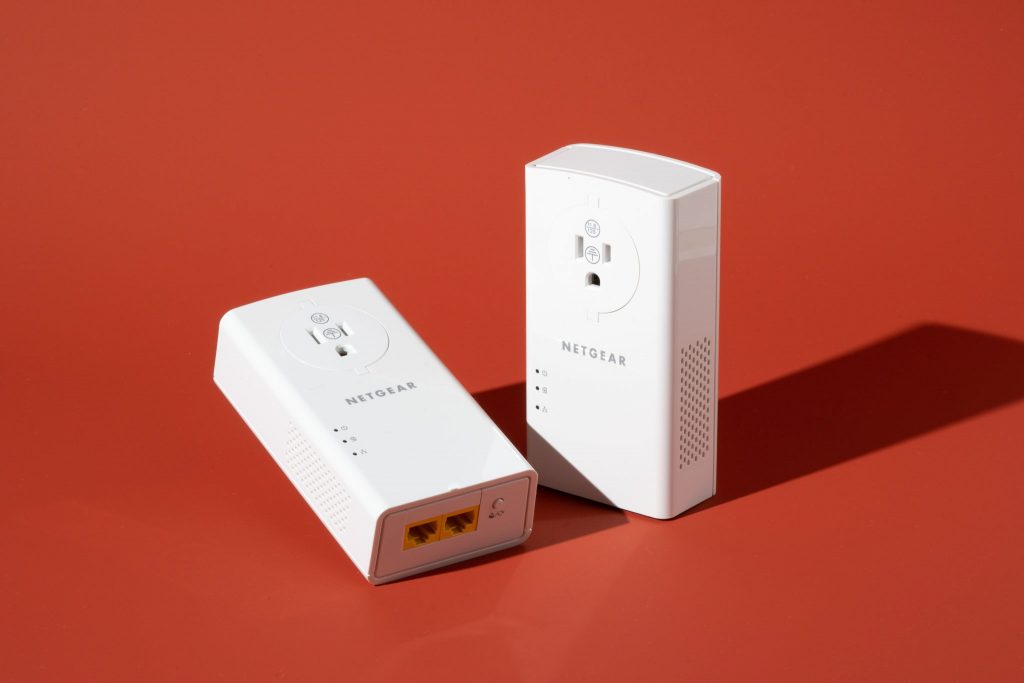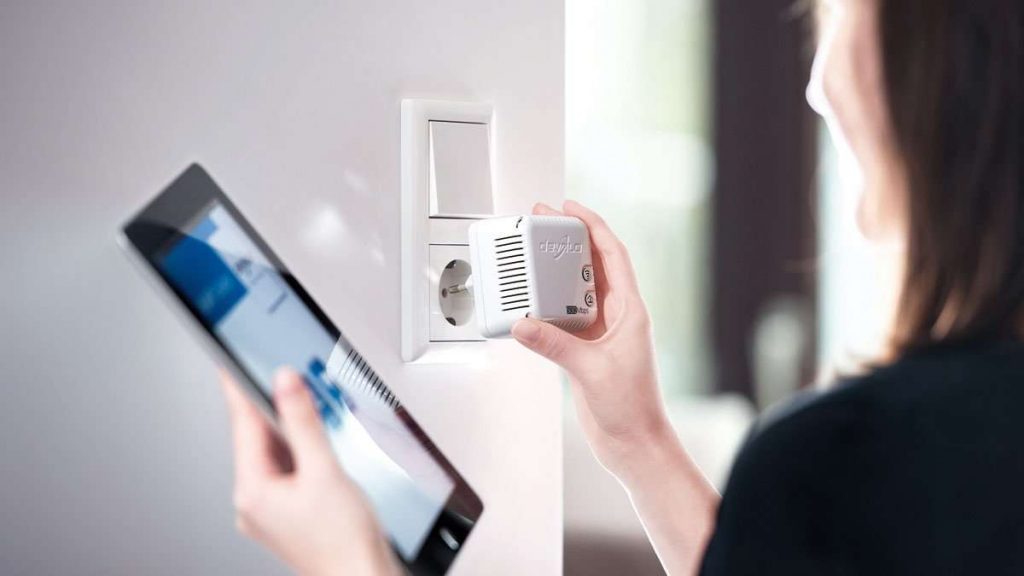If you’re using multiple routers, access points, and other networking devices along with a larger number of end-users at home or office, you’re probably dealing with complicated network wiring.
Powerline adapters were introduced to end the messy and inconvenient wiring. They’re a great option if you use the building’s electrical wiring to connect a device to your router. Are you curious to learn how do powerline adapters work? Keep reading, and you’re going to find out.

How Do Powerline Adapters Work
Powerline adapters work by using the electrical wiring in the building to connect devices to a network. They are added to each end of the communication line to achieve that.
How do powerline adapters connect
Whether you need to connect your computer, laptop, TV, network media device, or something else, you need to plug one powerline adapter into the consumer’s device and another into the internet provider – the router.
The pair of adapters is then connected to the existing electrical wiring, allowing them to communicate freely. On the other end of each adapter is an Ethernet cable, connecting the adapter to the router to provide connectivity and the device needing internet access.
Therefore, a primary powerline adapter network comprises an internet provider, typically a router. The router is connected to the powerline adapter via an Ethernet cable. The other end of the powerline adapter is connected to the consumer’s powerline adapter using the building’s existing electrical wiring. The consumer powerline adapter is then connected to the end device via Ethernet, delivering internet access to the device.
How to Set up Powerline Adapters
After getting a better understanding of how do powerline adapters work, installing them shouldn’t be too much trouble. You can easily set up powerline adapters following the below steps:
- Connect a powerline adapter to one of the available LAN ports on your router or modem using an Ethernet cable.
- Connect the same adapter to an AC socket outlet near the router.
- Take the second powerline adapter and connect it to the device that needs internet access using an Ethernet cable.
- Plug the second adapter into a near AC socket outlet.
- Turn the AC power on for the device that needs internet access.
What May Affect the Performance of Powerline Adapters?
A set of powerline adapters can help you get internet connectivity to your device. However, you shouldn’t expect it to deliver high-range internet speed. The powerline adapter may not provide sufficient speed for more demanding internet connections considering that data is transmitted over electrical wiring instead of a suitable cable designed for such data transmission.
Furthermore, other conditions may additionally affect connectivity speed. If your building has outdated electrical wiring, or there are many other electrical devices in the building, it can significantly affect connection speed.
Therefore, depending on the electrical installation, powerline adapters may not be the best choice if you expect high-speed connectivity.
Read more: How Does an Ethernet Switch Work

Making Sure Powerline Adapters Work Properly
Powerline adapters can be a convenient solution to your network problems. However, there are a couple of requirements you need to check off for a powerline adapter system to work correctly:
Both ends need to be on the same circuit
Before installing a set of powerline adapters, you must ensure that both AC outlets are on the same circuit. Although most homes only have a single circuit, there’s a chance for an additional circuit to be available due to an extension or any other customization of the electrical wiring.
That said, if you want to connect your router to a remote device in the outside office or another unit hooked on a different circuit, powerline adapters won’t help.
Electrical interference may impact connectivity
Electrical interference is quite common. For some devices like tumble dryers and microwaves, the effect is only temporary, but the impact can be more severe for fridges and freezers.
Spotting electrical interference is relatively simple. Most powerline adapters have a built-in indicator light that flashes orange or red to display an alert and tell you that the device is suffering from interference.
Why is this important? Interference can significantly impact and degrade connectivity speed. It is also one of the most common problems with powerline adapters.
Brands need to be matched
Although there isn’t a proper explanation about why this is happening, powerline adapters from different manufacturers don’t work well together. For instance, if you get a Divola Powerline set and then add a TP-Link one to the network, it will fail.
Therefore, if you want to ensure a proper function from a powerline adapter system with multiple sets, try sticking to a single brand.
Configuration options
Powerline adapters are some of the most basic networking devices. They’re straightforward to set up, so literally, anyone can get a set, plug it in, and continue with their work.
However, the limited configuration settings can be a significant downside in some scenarios. Frequencies can quickly get crowded if you’re using a powerline adapter set in a block of flats with many WiFi networks. Frequency jams can manifest through signal problems and interference, causing slow and unreliable connectivity.
The above problem can easily be solved by switching frequencies. However, not all powerline adapters offer the feature. Therefore, if you’re using a powerline set in an area with dense WiFi coverage, you should look for a powerline adapter set with a customizable frequency.
Also read: How Does a Wireless Router Work
Extension cords
Once you understand how powerline adapters work, you’ll find it more than evident that these devices don’t go well with extension cords. That’s why you should be very cautious when installing them in place.
You’ll want to ensure that you set the powerline adapter close to an AC socket, as extension cords and daisy-chained extenders cause significant losses or no connectivity.
Even a shorter extension lead may cause significant speed loss, so you should place your powerline adapters as close to an AC outlet as possible.